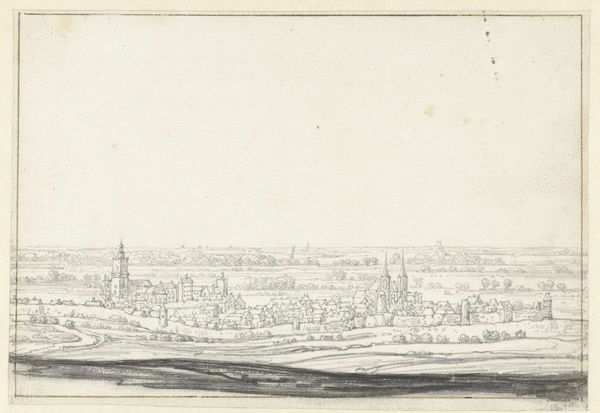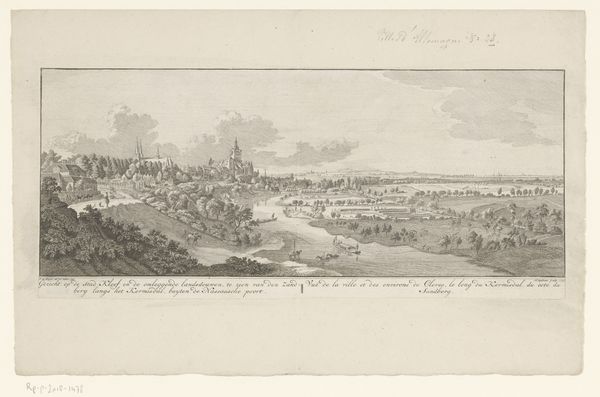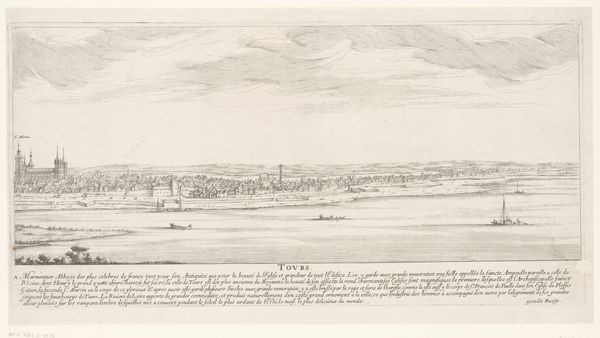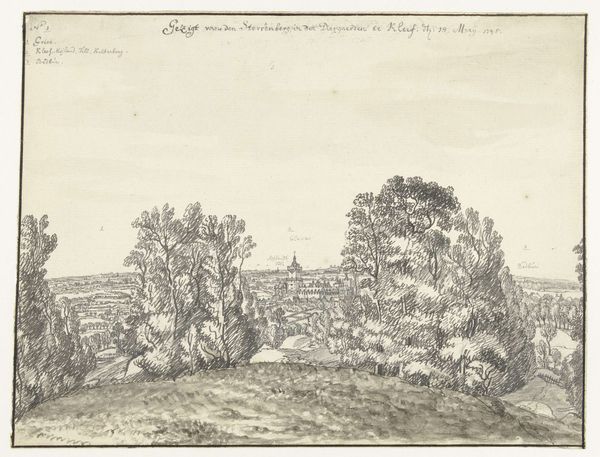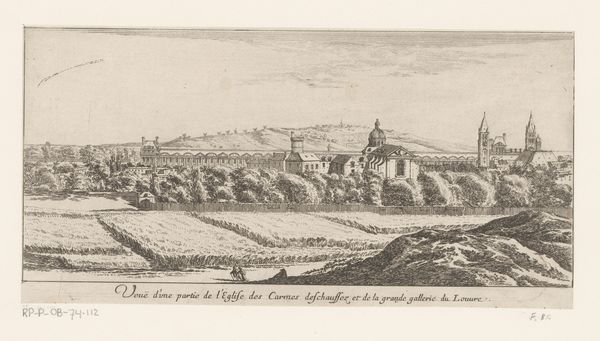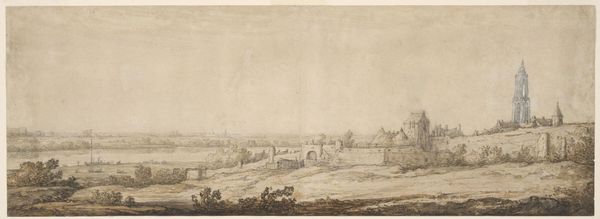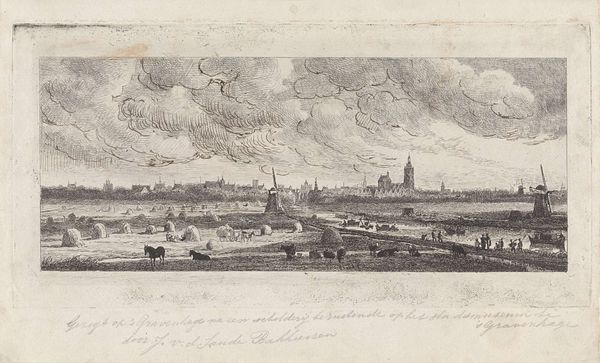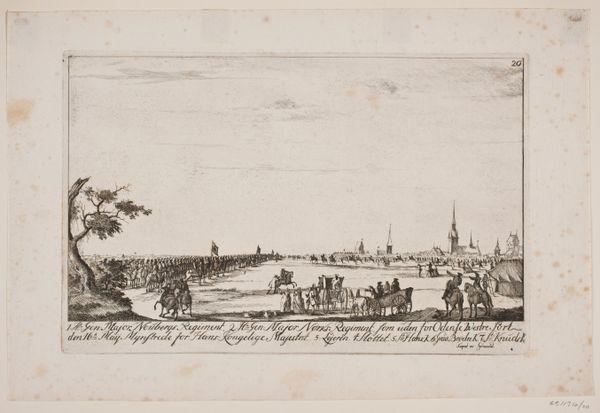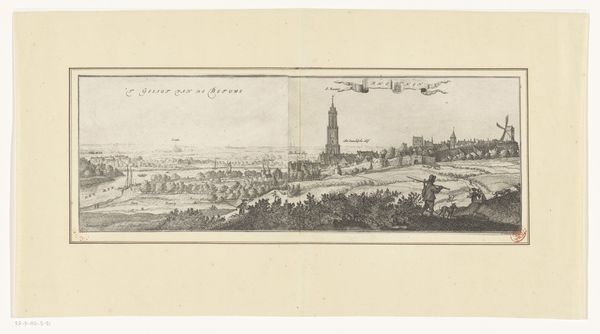
drawing, pencil
#
drawing
#
dutch-golden-age
#
landscape
#
pencil
Dimensions: height 132 mm, width 248 mm
Copyright: Rijks Museum: Open Domain
Curator: Let's spend some time contemplating "Gezicht op Leersum," or "View of Leersum," a drawing potentially created between 1750 and 1757 by Jan de Beijer, rendered delicately in pencil. It's currently held in the Rijksmuseum collection. What is your first take? Editor: It has a serene, almost melancholy feel. The vast open landscape rendered in such fine detail... it gives a sense of looking back, perhaps a longing for simpler times? Curator: Interestingly, these landscape drawings became increasingly popular as forms of topographical documentation. This was during the Dutch Golden Age, when a burgeoning merchant class became invested in charting their territories and projecting power through owning visual records of places like Leersum. These weren't simply picturesque scenes, they were statements of ownership and civic pride. Editor: So, beyond just an accurate rendering, are you suggesting the drawing of the distant town serves to instill trust in this controlled landscape, and in turn its ruling gentry? I can certainly see the value in presenting Leersum this way. From an iconographic perspective, though, the vast emptiness of the open land reminds me of classical ideas of the *locus amoenus*, a quiet pastoral plane ripe for allegorical insertion. The symbols might be implied through the open potential rather than explicitly there, yet it still resonates on a symbolic level. Curator: Precisely! And consider the function of this landscape for leisure and agriculture, how these seemingly empty spaces are imbued with significant potential. Editor: So you would suggest the almost empty landscape is less to do with classical iconography than socio-economic factors specific to the village of Leersum in the 1750s? Fascinating to ponder the level of intent versus the ambient iconography the land presents. Curator: It certainly raises fascinating questions about artistic intent and the varied ways in which landscapes are imbued with significance across cultures and through time. A reminder, perhaps, of how we project our own desires and beliefs onto the world around us, as much as the other way around. Editor: Absolutely. It leaves me contemplating what a present-day “View of Leersum” might capture – how our symbols shift, yet somehow, in places like Leersum, deeply rooted archetypes stay lingering behind the veil.
Comments
No comments
Be the first to comment and join the conversation on the ultimate creative platform.
